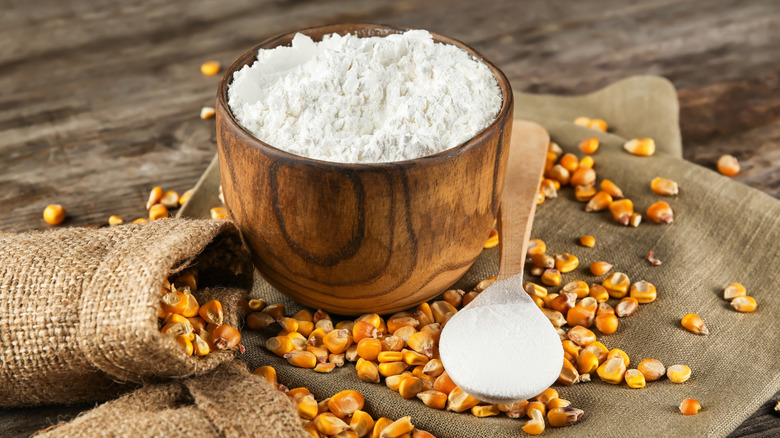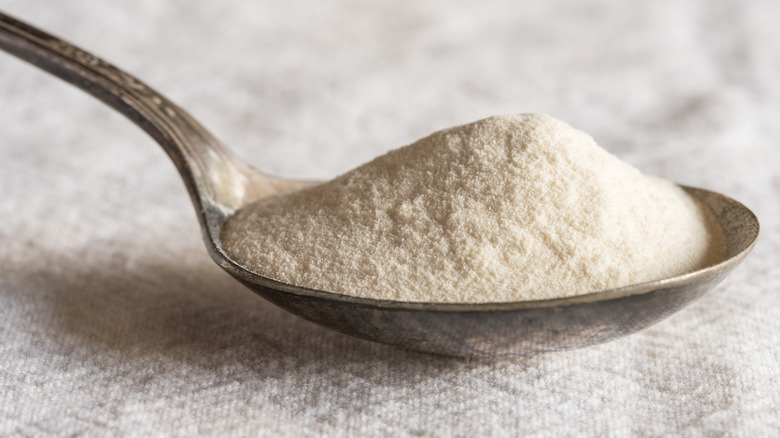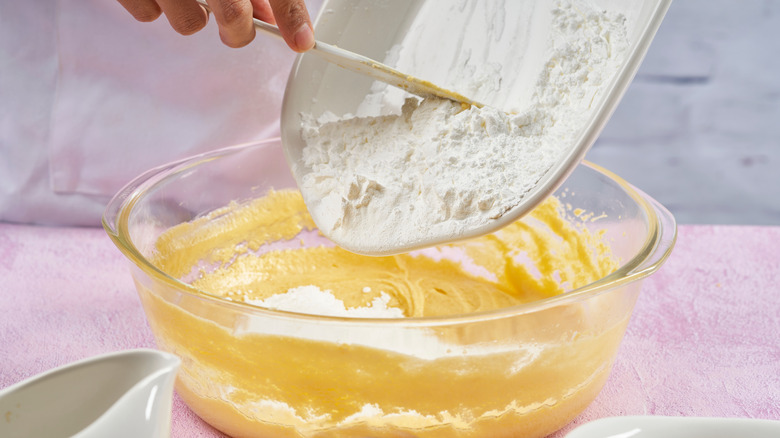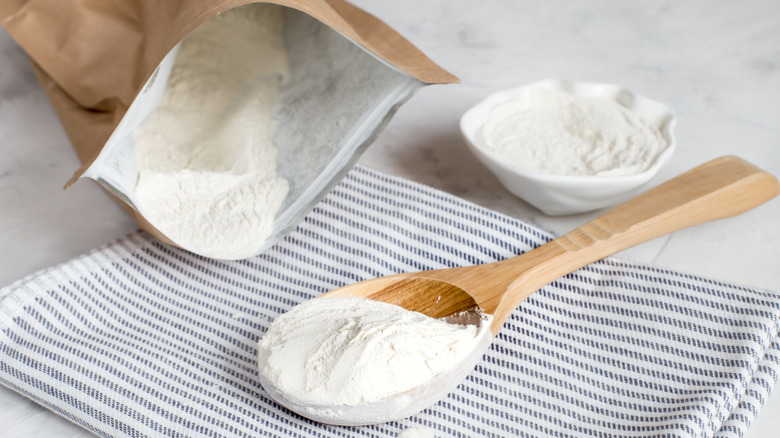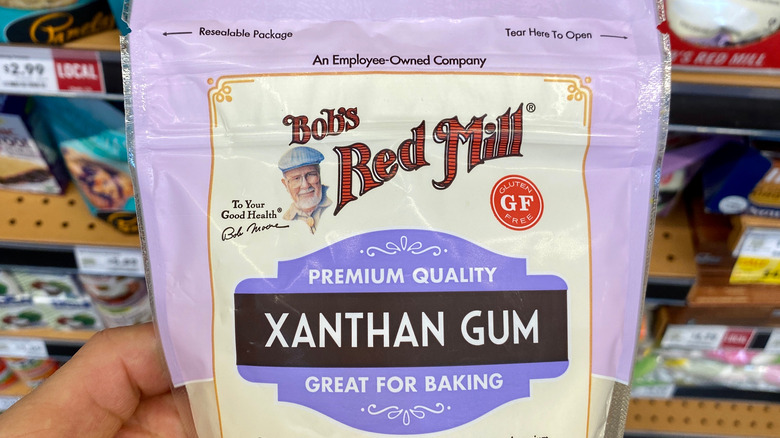Xanthan Gum Vs Cornstarch: Which Is A Better Thickener?
Sometimes when you're cooking a stew, soup, or sauce, you want it to have a thicker consistency requiring a thickening agent. When it comes to baking or cooking up a dessert, you may want to thicken the liquid or filling so it has a better texture, which is where cornstarch and xanthan gum come in. Cornstarch is derived from grinding corn kernels into a fine powder. Meanwhile, xanthan gum is considered a food additive made through fermentation of different vegetables, including cabbage, corn, soy and wheat with a bacteria called xanthomonas campestris (via The Spruce Eats).
During the process, the sugars in the vegetables begin to break down, creating complex sugar molecules that turn into a liquid substance that is often gooey, according to Healthline. Once this solidifies, alcohol is added and then it is dried so it can be ground into a powder. Xanthan gum acts as a fantastic emulsifier, or gelling agent, and does so quickly. It's often found in a lot of store bought ingredients, ranging from salad dressings, juices, soups, ice cream, and more.
Should you use cornstarch or xanthan gum when baking?
Both of these thickening agents can play an important role when baking and have their place, depending on what your goals are with your baked goods. Xanthan gum is often used in gluten-free baking to create a better emulsifier, give structure, and add some moisture. Xanthan gum helps keep bread, cookies, muffins, cakes, or other baked goods held together instead of turning crumbly. Gluten has proteins that help meld ingredients together and without them, xanthan gum works as a nice substitute.
Meanwhile, adding some cornstarch in your delicious baked goods can help keep the moisture in, as well as give them a lighter texture. According to Bob's Red Mill, "Combining a starch like cornstarch with other flours can help soften the rigid proteins of the flour, resulting in a light and chewy dessert." The best way to know if there's sufficient cornstarch is by checking the consistency of the batter — if so, no need to add any more but if it's still too runny, sprinkle a bit more in until it's just right for your taste.
Is xantham gum better for you than cornstarch?
Xanthan gum is believed to be good for you when consumed in high amounts, but that isn't easily attainable and it's likely to cause digestive issues, according to Healthline. However, some say that xanthan gum has zero nutrients as stated on Medical News Today. Cornstarch is also not considered to be that good for you because it has a lot of carbs and calories, and it doesn't have very many vitamins, minerals, or even fiber. The key with adding cornstarch to your food is using it in moderation and as part of a well-balanced diet.
You may also want to pay close attention to food labels as many pre-made, and processed foods, such as salad dressing, add cornstarch so it's possible you could be eating more of this than you realize. So, if you're hoping for a better option, it really comes down to eating these two thickening agents in moderation.
What's the ratio of cornstarch to xanthan gum?
Although you can often use these two thickening agents interchangeably — depending on what you're preparing — sometimes one is a better, or best choice when used for a specific purpose. The good news is that the ratio is the same for both of these thickeners — one to one. However, even though the amount is the same as you would use for cornstarch, it is important to add xanthan gum slowly because a little goes a long way.
More importantly, xanthan gum can quickly cause the liquid to take on a gooey texture, which you likely don't want. And once that happens, you may not be able to undo the gooey mess and you may have to start all over again or deal with an unwanted texture. So, just remember to add it little by little to ensure that whatever you're cooking up gets the right consistency that you want.
Which is more expensive, xanthan gum or cornstarch?
Now when it comes to how much each of these thickeners costs, there is a real winner. That is, one is definitely more expensive than the other. Xanthan gum costs significantly more than cornstarch does and not only do you have to hand over more cash, the packet or box size is also less than cornstarch. So, you'll basically be paying more for less.
On Bob's Red Mill website, the cost for an 18 ounce bag of cornstarch is $3.19, while an 8 ounce bag of xanthan gum goes for $12.99. If you're planning to make a lot of gels or bake lots of gluten-free items, then it may make sense to spend the big bucks on the food additive and thickener xanthan gum. But, if you're looking for an overall thickening agent for sauces, custards, pie fillings, or want to add a chewiness to your cookies and brownies, than cornstarch is the way to go.
